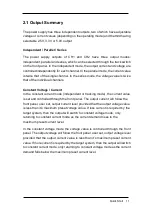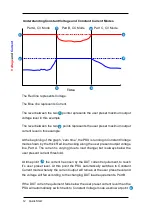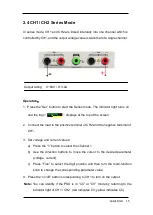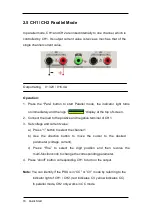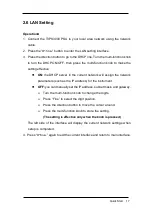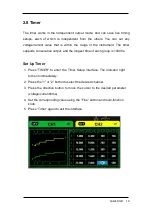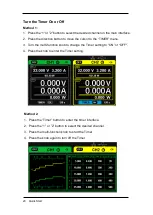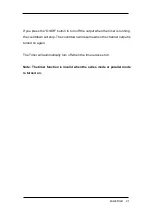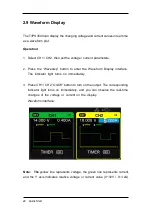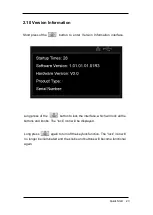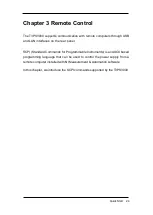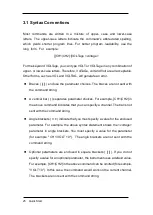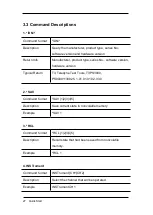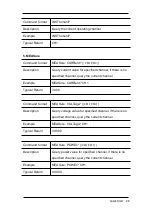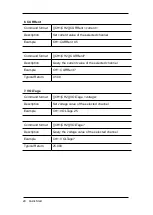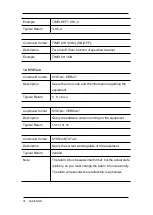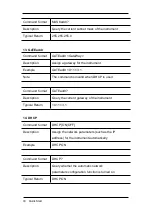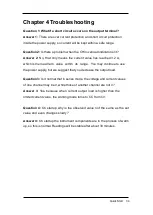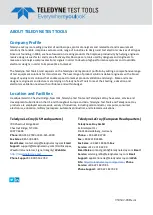
3.1 Syntax Conventions
Most commands are written in a mixture of upper- case and lower-case
letters. The upper-case letters indicate the command's abbreviated spelling,
which yields shorter program lines. For better program readability, use the
long form. For example:
[{CH1|CH2}:]VOLTage <voltage>
For the keyword VOLTage, you can type VOLT or VOLTage in any combination of
upper- or lower-case letters. Therefore, VolTaGe, volt and Volt are all acceptable.
Other forms, such as VOL and VOLTAG, will generate an error.
●
Braces (
{ }
) enclose the parameter choices. The braces are not sent with
the command string.
●
A vertical bar (
|
) separates parameter choices. For example, {CH1|CH2} in
the above command indicates that you can specify a channel. The bar is not
sent with the command string.
●
Angle brackets (
< >
) indicate that you must specify a value for the enclosed
parameter. For example, the above syntax statement shows the <
voltage
>
parameter in angle brackets. You must specify a value for the parameter
(for example " CH1:VOLT 10"). The angle brackets are not sent with the
command string.
●
Optional parameters are enclosed in square brackets (
[ ]
). If you do not
specify a value for an optional parameter, the instrument uses a default value.
For example, {CH1|CH2} in the above command can be omitted (for example,
"VOLT 10"). In this case, the command would work on the current channel.
The brackets are not sent with the command string.
25 Quick Start
Содержание T3PS3000
Страница 1: ...T3PS3000 Programmable DC Power Supply Quick Start Guide Version 1 3 September 2018 ...
Страница 41: ......

